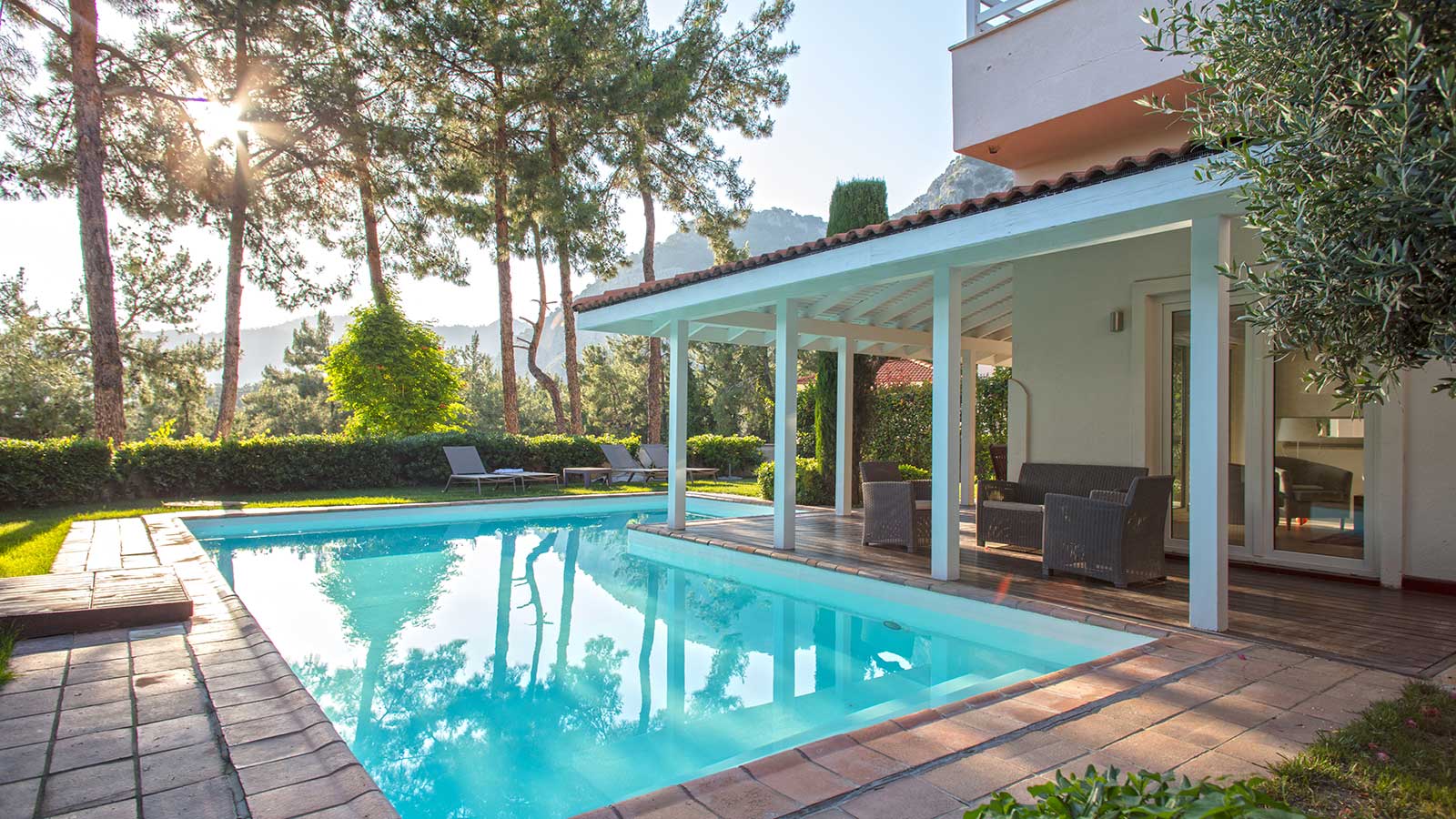
If you've ever had to shock a pool, you'll know that there's a huge range of products on offer and they all have similar-sounding names. There's pool shock, pool chlorine, chlorine tablets, chlorine bleach, liquid chlorine and much, much more.
It can be confusing and more than a little worrying. If you don't know what you're doing with pool chemicals you could easily make your pool dangerous to swim in. That's why I spoke to a pool expert about the differences between these terms and found that they all relate to the same chemical in different forms and concentrations.
However, these forms all do different things, so it's essential to know the difference in order to shock your pool properly.
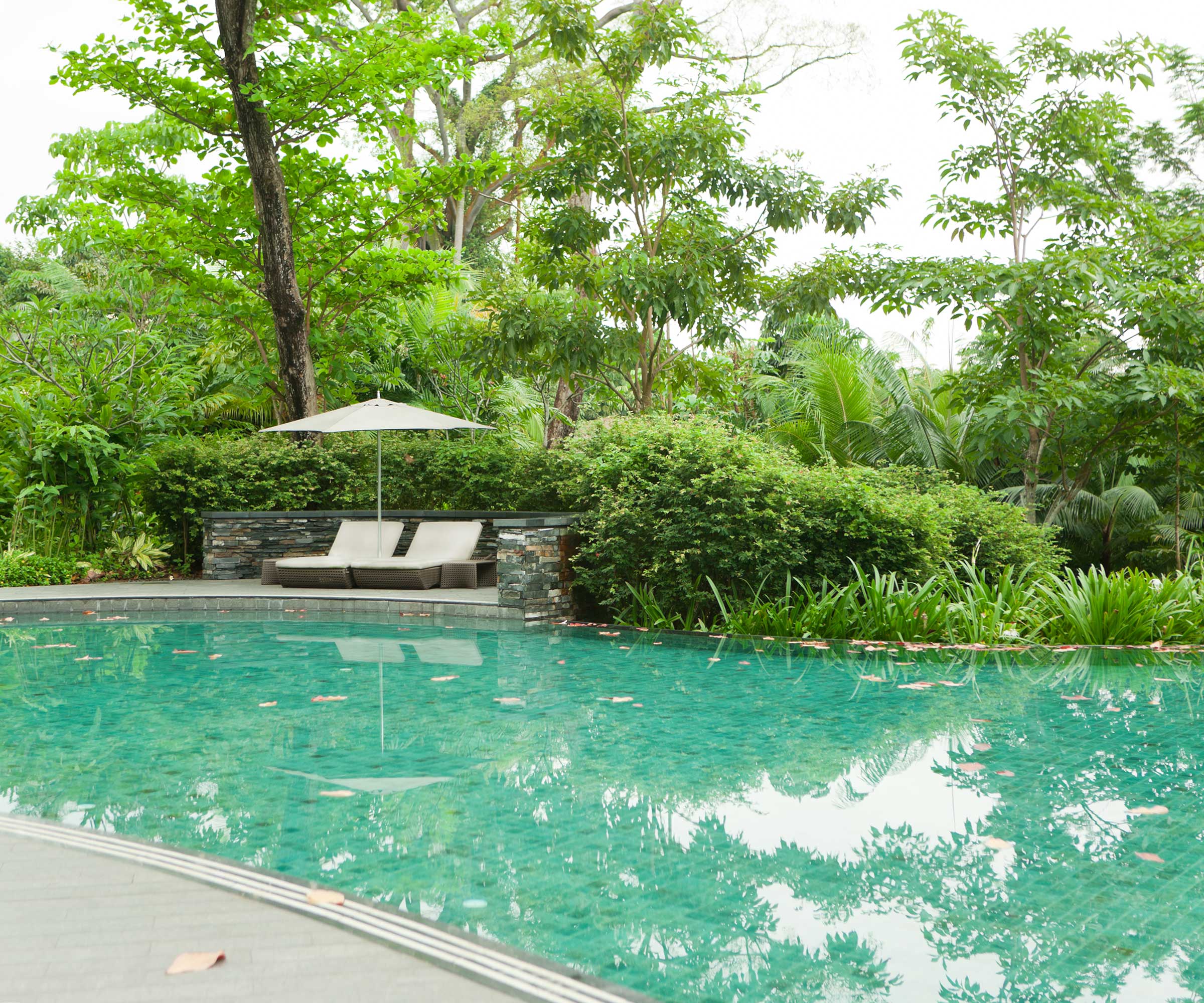
What's the difference between shock, chlorine, and bleach?
There's no difference between the three products. In fact, the three terms refer to the same product in different forms. Pool expert Rafi Friedman told me that 'Pool shock, pool chlorine, and chlorine bleach are usually (but not always) the exact same chemicals at different concentrations.' It gets complicated because similar terms are used interchangeably.
'Shocking' a pool is when you quickly raise its chlorine level. It's an essential part of pool maintenance: you must 'shock' your pool to keep it clear of green algae and bacteria that can cause infections. If you've left your pool for a while and the water has turned green with algae, you need to use some form of highly concentrated sodium hypochlorite to rapidly increase the level of chlorine and kill the algae.
It's important to note here that sodium hypochlorite is what most people call 'chlorine', but isn't actually chlorine. Pure chlorine is a gas at room temperature - and poisonous. This is why pools use sodium hypochlorite. In sodium hypochlorite, chlorine is bound to sodium in order to keep it in a solid or liquid form. When you add it to a pool, the sodium dissolves in the water, leaving just chlorine, which kills algae and bacteria.
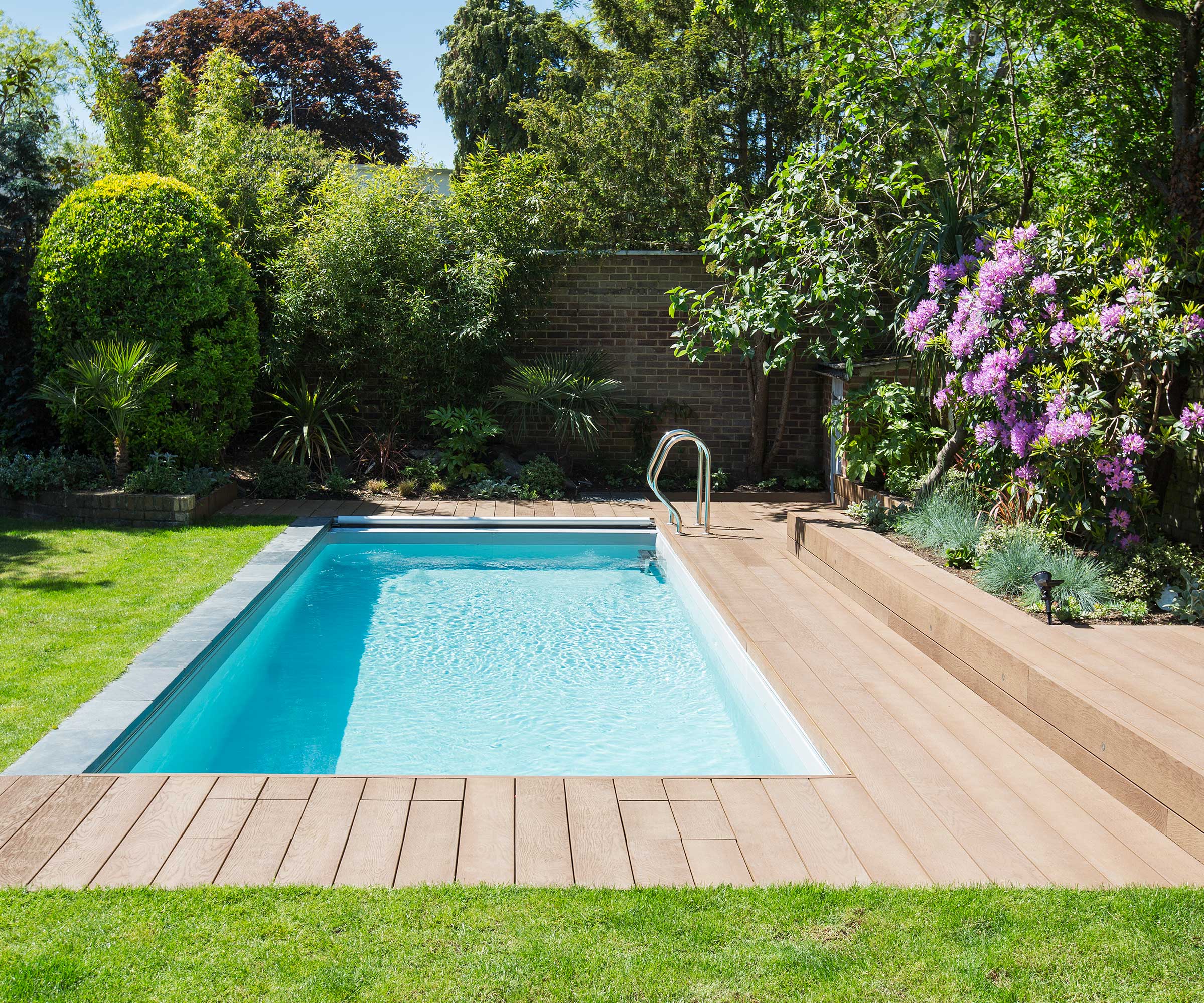
With the science lesson over, the noun 'pool shock' usually refers to granulated sodium hypochlorite. It usually comes in single-use bags, and it's the strongest form of the chemical you can buy. This form is sometimes stabilized, which means it contains chemicals like cyanuric acid (CYA) which helps to maintain chlorine levels for longer. However, CYA can raise the pH level of your pool, so it should be used sparingly to prevent rashes.
'Pool bleach', 'chlorine bleach', or 'liquid chlorine' is another way of shocking a pool. It is liquid sodium hypochlorite in a slightly less concentrated form. It's actually the same chemical as laundry bleach, though you shouldn't use laundry bleach in your pool, as it is scented, has a lower concentration, and often has other additives that aren't safe for swimming.
Pool bleach is usually cheaper than granulated 'shock', and you can use it to maintain the level of chlorine as well as to shock your pool. Because it's less concentrated, you need a lot of it. The rough rule is to use a gallon of liquid chlorine per 10,000 gallons of water, so the average American pool needs anything from 15-20 gallons.
'Pool chlorine' usually refers to chlorine tablets like these at Walmart, which maintain a base level of chlorine in your pool. These are weaker than shock and keep the chlorine at a high enough level to stave off algae, bacteria, and insect larvae, but low enough that it's safe to swim in.
Rafi gave me a helpful summary. 'Pool shock is more concentrated than chlorine bleach, which is much more concentrated than normal maintenance levels of pool chlorine.'
This is usually what is referred to as 'pool shock'. This particular pool shock is much cheaper than buying it from a pool store and does exactly the same job. It's perfect for increasing chlorine levels once a week.
These tablets will keep your pool clear and chlorinated on the day-to-day.
Liquid chlorine like this is much cheaper than shock or tablets, but you need a large amount for it to have any effect.
When to use pool shock
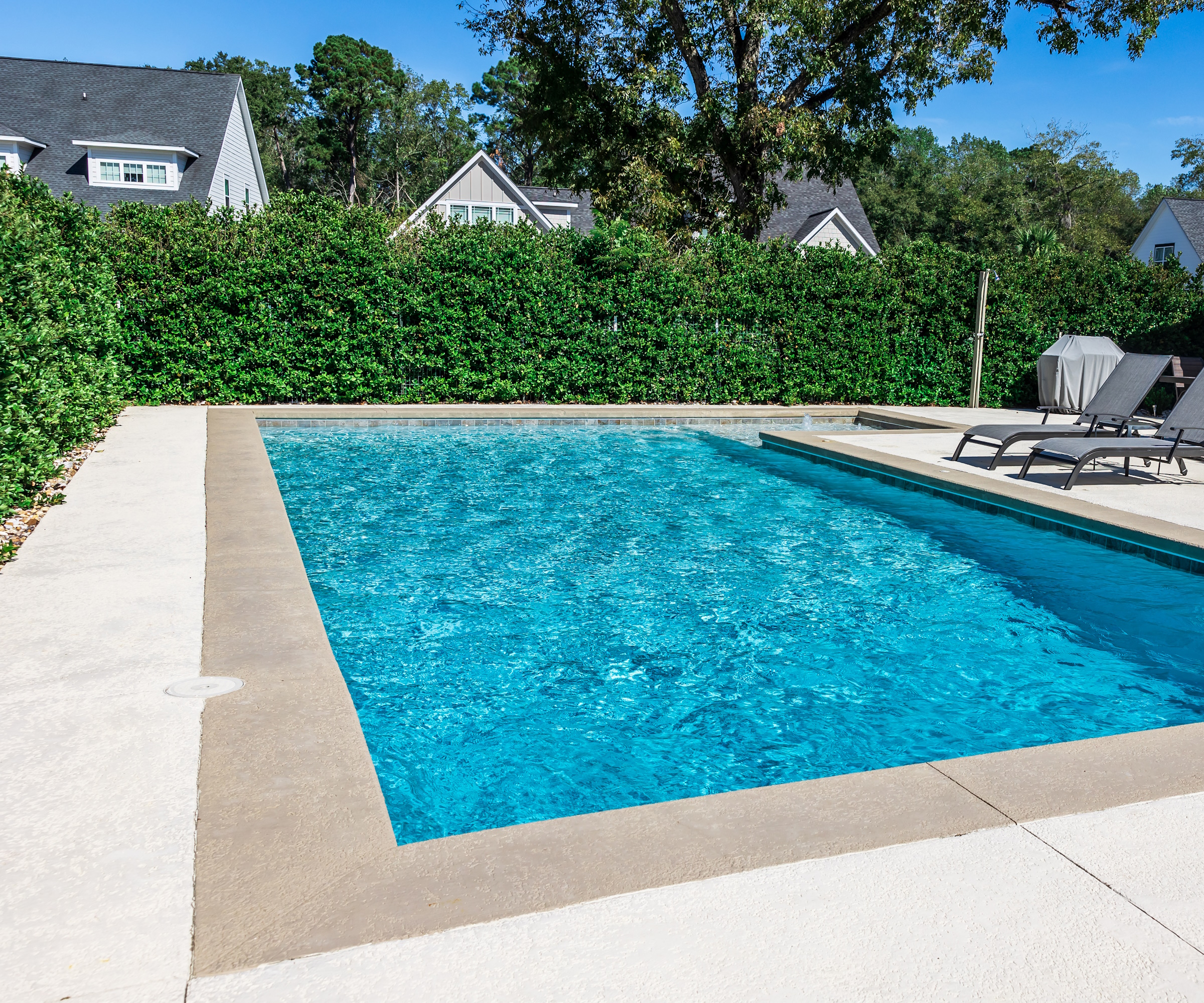
There are three occasions where pool shock - either in granulated or liquid form - is essential. The first is if you're tackling a very dirty pool. If you've opened your pool for the first time after winter to find more of a swamp than a pool, or returned from vacation to find gallons of gross, green water, you need pool shock. It will raise the chlorine in the pool and kill the algae.
Another occasion is weekly pool maintenance. Chlorine interacts with organic matter like sweat. It's technically odorless, and the chlorine 'smell' is actually the smell of chlorine interacting with organic material. This interaction weakens over time, so your chlorine is less effective. You therefore need to add some shock every week to bump up the levels.
This is also why you should shock your pool after heavy use. If you've had a family reunion and 40 people have been in and out of the pool, you need shock in order to recover the levels. It's also a good idea to shock your pool after strong storms or rainfall because rainwater can introduce algae and debris to the pool.
However, shock is so strong that it isn't safe to swim in the pool for 24-48 hours after you've shocked it. This is why you also need pool tablets.
When to use pool tablets

You should use pool tablets all the time. These tablets help to maintain the level of chlorine throughout the week, and they also help to maintain your pool's pH, stopping it from becoming too acidic or alkaline and keeping your swimmers from developing rashes or itchy eyes.
Because they aren't as strong as shock, you can use them at the same time as you swim. All you need to do is add the tablets to a cheap floater like this from Amazon and your pool will stay clear all week. You can also automate the process by installing a chemical feeder like this from Amazon, which slowly releases the tablets over several weeks.
Should I use granulated pool shock or bleach?
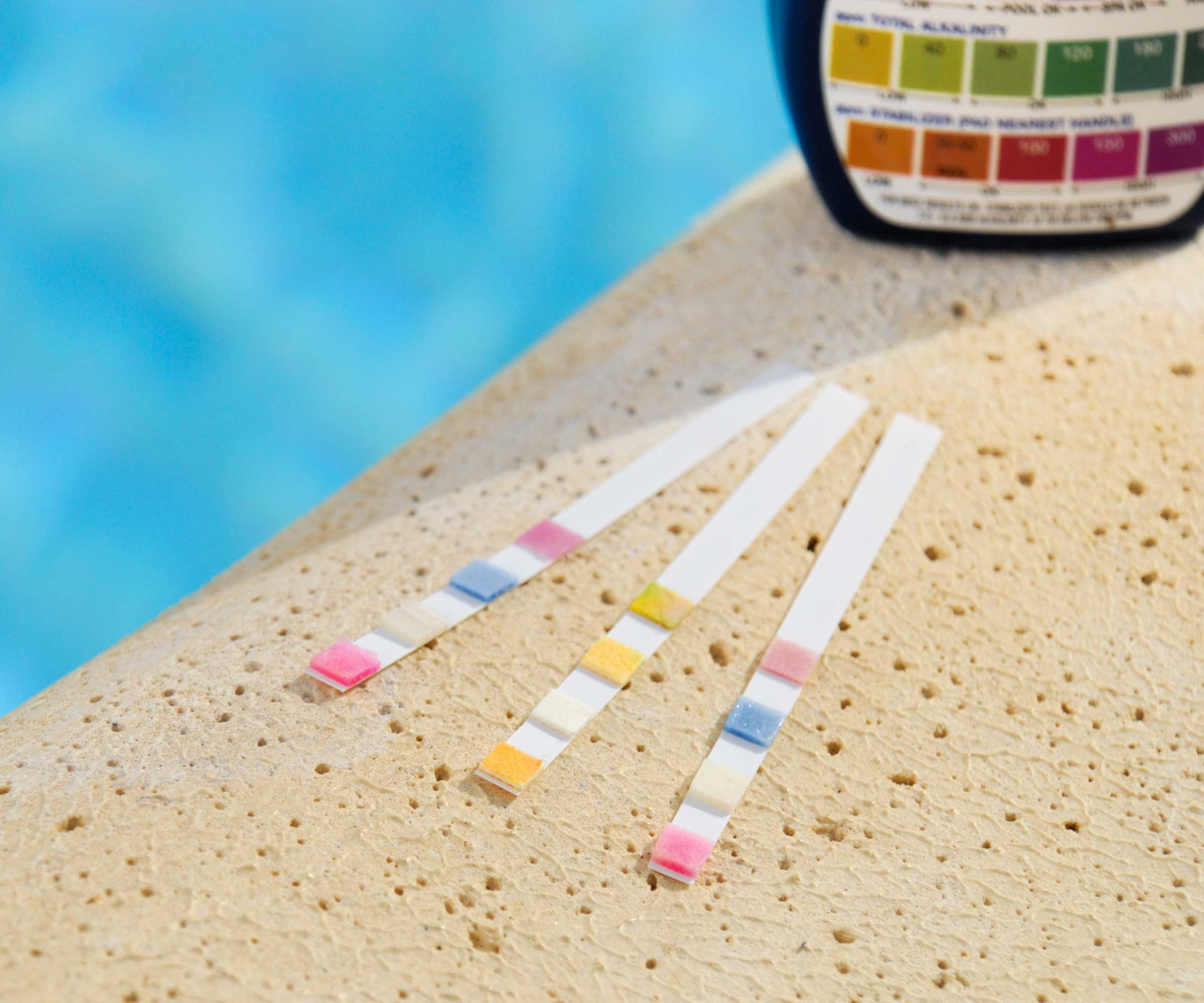
Whether you should use granulated pool shock or bleach depends on a couple of different factors. The first is price. If you bulk-buy liquid chlorine you can save a lot of money, because granulated pool shock is a lot more expensive.
The second is ease. If you're good with math, you can easily work out the right volume of liquid bleach needed to shock your pool. If math isn't your strong point - or you'd rather not take the time - granulated shock is measured out for you, so you can add it without worrying that you're over- or under-chlorinating your pool.
Another issue is maintaining pH. If you test your pool and the pH is too high or too low, liquid chlorine is the best bet, because it doesn't have any stabilizers to affect your pool's pH.
Pool shock FAQ
Can pool shock hurt your skin?
You should always wear gloves when handling sodium hypochlorite in any form any form, because it can cause chemical burns.
For more advice on pool maintenance, check out our guide to the best way to clean pool tiles or our coverage of how to clean a pool filter.







